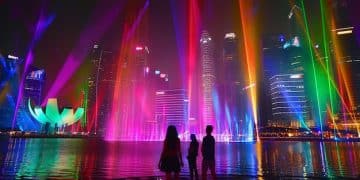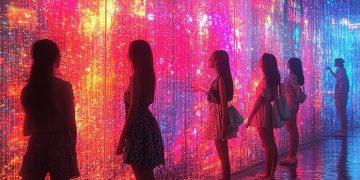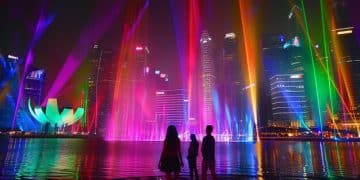The Future of K-Pop: 2025 Predictions for Idols and Music Trends

In 2025, the future of K-Pop will see the rise of AI-integrated music production, hyper-personalized fan experiences through augmented reality, and a greater emphasis on global collaborations and diverse talent, redefining the landscape of idol groups and music trends.
As the vibrant world of K-Pop continues to evolve, speculation about its future is rife. What trends will dominate, and how will the next generation of idols shape the soundscape of 2025? We delve into predictions for the upcoming year, exploring the potential transformations in idol culture and musical innovation within The Future of K-Pop: Predictions for the Next Generation of Idols and Music Trends in 2025.
The Evolution of K-Pop Idols: Skills and Training
The training regimes and expected skill sets for K-Pop idols are constantly evolving. Increased global competition means that future idols will need to be even more versatile and exceptionally talented. This section explores the anticipated advancements in training programs and skill development.
Enhanced Vocal and Dance Programs
Future K-Pop training academies will likely incorporate advanced technology to optimize vocal and dance training. What might such advancements look like?
- AI-Driven Feedback: Real-time feedback systems powered by artificial intelligence will analyze an idol’s performance, providing tailored suggestions for improvement.
- Virtual Reality Practice: VR environments will simulate different performance scenarios, helping idols develop stage presence and adapt to various crowd dynamics.
- Personalized Training Schedules: Genetic testing may be used to customize training schedules based on an individual’s physical predispositions and learning styles.
The emphasis on holistic skill development will ensure that idols are well-rounded performers, capable of excelling in diverse musical and performance styles. This shift could lead to a more sophisticated and globally appealing K-Pop sound.
Diversification of Musical Genres and Styles
K-Pop’s musical landscape is continuously broadening, incorporating a fusion of various genres and subgenres. As we approach 2025, we can expect even more experimental and diverse sounds. The integration of new styles will attract a broader global audience.
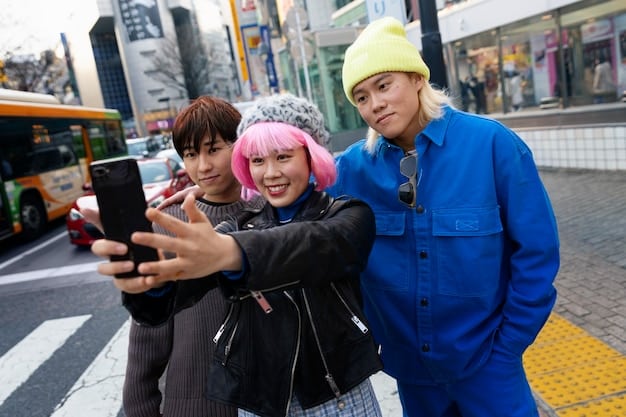
One potential development is the incorporation of more Latin rhythms, African beats, and traditional Asian instruments, creating a globally infused K-Pop sound. This fusion will not only diversify the music but also promote cultural exchange and inclusivity.
Additionally, the rise of hyper-pop and electronic dance music (EDM) influences could lead to more high-energy, digitally driven tracks. Expect to see collaborations with international producers and artists from different genres, pushing the boundaries of what defines K-Pop.
The Impact of AI and Technology on Music Production
Artificial intelligence is poised to revolutionize music production, and K-Pop is likely to be an early adopter of these technologies. AI tools can assist in songwriting, arrangement, and mastering, potentially streamlining the production process and enabling artists to explore new creative avenues.
AI Songwriting and Composition
How will AI be used in songwriting, and what impact will it have on originality and creativity?
- AI-Generated Melodies: AI algorithms can generate melodies based on vast datasets of popular songs, providing composers with inspiration and starting points for new tracks.
- Automatic Arrangement: AI tools can assist in arranging songs, suggesting optimal instrumentation and harmonies based on the genre and style.
- Personalized Sound Design: AI can analyze an artist’s vocal characteristics and preferences to create custom sound effects and processing chains.
While there are concerns about the potential for homogenization, AI can also democratize music production, allowing independent artists to create high-quality tracks without the need for expensive studios and producers.
Augmented Reality (AR) and Virtual Reality (VR) in Concerts
AR and VR technologies are set to transform live performances, offering immersive and interactive experiences for fans. K-Pop concerts are already known for their elaborate stage designs and special effects; AR and VR will elevate these performances to a new level.
Interactive Fan Experiences
How will AR and VR enhance the concert experience, and what opportunities will these technologies create for fan engagement?
- Virtual Stage Extensions: AR can overlay virtual elements onto the physical stage, creating dynamic and visually stunning environments that extend the performance beyond the confines of the venue.
- Personalized Avatar Interactions: Fans can create avatars that interact with the performers on stage in real-time, adding a layer of personalization and immersion.
- VR Concert Streaming: VR allows fans who cannot attend in person to experience the concert as if they were there, providing a front-row seat to the action.
These technologies will not only enhance the concert experience but also create new revenue streams for artists and entertainment companies, through the sale of virtual merchandise and access to exclusive VR content.
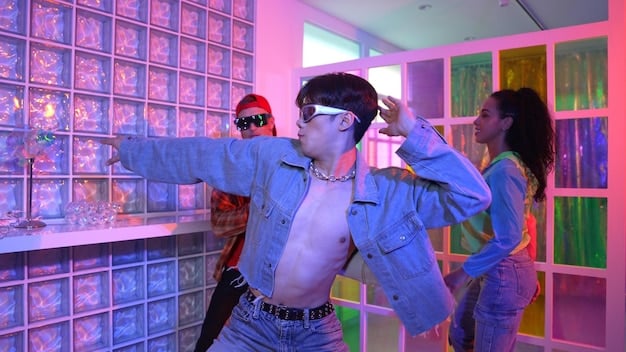
The Rise of Virtual Idols and Avatars
Virtual idols and avatars are gaining popularity, offering new opportunities for artists and entertainment companies. These digital entities can perform around the clock, interact with fans in multiple languages, and exist independently of physical limitations.
Advancements in AI and CGI will make virtual idols more realistic and engaging, blurring the lines between virtual and real performers. We can expect to see virtual idols collaborating with real-life artists, appearing in commercials, and even headlining concerts.
The rise of the metaverse will further accelerate the adoption of virtual idols, as fans seek immersive and interactive experiences in digital environments. Virtual idols can also offer greater creative control and flexibility, as they are not bound by the constraints of physical performance and personal limitations.
Global Collaborations and International Expansion
K-Pop’s global reach continues to expand, with increasing collaborations between K-Pop artists and international musicians. These collaborations not only broaden the appeal of K-Pop but also introduce new audiences to different musical styles and cultures.
Cross-Cultural Musical Blends
What forms will these collaborations take, and how will they influence the sound of K-Pop in the future?
Expect to see more collaborations between K-Pop groups and Latin artists, creating a fusion of Latin rhythms and K-Pop melodies. Similarly, collaborations with African musicians can introduce new beats and vocal styles, adding depth and richness to the music.
Furthermore, collaborations with artists from the Middle East and South Asia can create a unique blend of traditional and modern sounds, appealing to diverse audiences worldwide. These cross-cultural collaborations will enrich the musical landscape and foster greater understanding and appreciation between different cultures.
| Key Concept | Brief Description |
|---|---|
| 🎤 Enhanced Training | AI-driven vocal and dance training programs. |
| 🎶 Genre Diversification | Fusion of Latin, African, and Asian musical styles. |
| 🤖 AI in Production | AI tools for songwriting, arrangement, and sound design. |
| 🌐 Global Collaborations | Partnerships with international artists for a global appeal. |
Frequently Asked Questions
▼
AI will assist in generating melodies and arrangements, streamlining music production. It will enhance, not replace, creativity, offering new tools for artists to explore unique sounds.
▼
Virtual reality will create immersive concert experiences, allowing remote fans to feel present. It offers interactive features like personalized avatars and virtual merchandise sales, expanding reach.
▼
Idols are blending K-Pop with Latin beats, African rhythms, and Asian instruments to attract a broader audience. This cross-cultural fusion introduces new, globally appealing sounds.
▼
Global collaborations broaden K-Pop’s appeal and introduce it to vast international audiences. They also create a rich exchange of musical styles, boosting creativity and innovation.
▼
The next gen of idols will require enhanced vocal abilities, diverse dance skills, and technological literacy for AI use. Adaptability to global collaborations and virtual media influence is key.
Conclusion
In conclusion, the landscape of K-Pop in 2025 promises dynamic change. The integration of AI, VR, and global collaboration, combined with enhanced training, will redefine what it means to be a K-Pop idol and create music that resonates worldwide.
